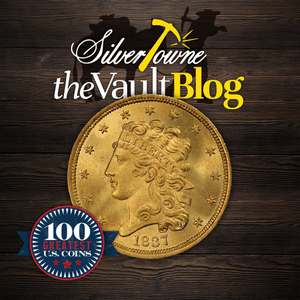
Classic United States gold is always a good idea as a collector. No matter the denomination, no matter the year, it always seems to have a significant place in the numismatic collecting community. That is certainly the case with this next coin highlighted in the fourth edition of Whitman Publishing’s 100 Greatest United States Coins series. With author Jeff Garrett talking us through this top 50 pick, we will look at a small run of year dates for a coin that has an incredibly low mintages and even lesser known existences.
#45 - 1834-1837 Proof Classic Head Half Eagles
As a result of the Coinage Act of 1834, the half eagle and quarter eagle denomination gold coins in the United States were redesigned by William Kneass mid-year. With stylistic changes, there also came weight reductions that were needed due to early gold coins being melted down because their bullion value was higher than their face value. The weight went from 135 grains (8.75 grams) to 129 grains (8.36 grams). While circulation strikes were more abundant in both the earlier and later Classic Head half eagle designs, that is not the case with the Proof versions.
According to Garrett, there are at most 20 examples known of the Proof denomination between 1834-1837. Of these, he states, few of them are damaged or held in museums. Of all the years, 1834 is the most “common.” There are between 15 and 20 proofs known, with one a part of the “King of Siam set.” There are two 1835-dated Proof versions featured in the Pittman Collection with the third residing at the Smithsonian Institution’s National Numismatic Collection. There are three known examples of the 1836 in existence with one of them housed at the National Numismatic Collection, one in the Pittman Collection, and the third in the original 1836 Proof set that was purchased by Brian Hendelson in 1996. The National Numismatic Collection houses the unique example of 1837.
In 1960, a 1834-1837 dated Proof Classic Head Half Eagle was valued at $2,500 for a Choice Proof condition. That same condition rose to $200,000 in this fourth edition.







